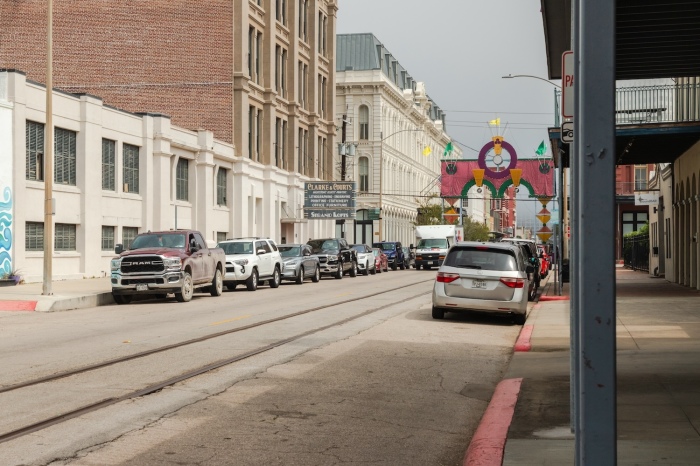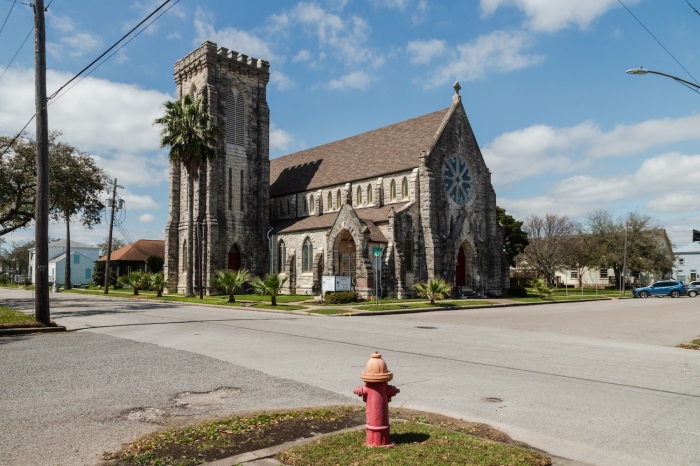Shortly after President Donald J. Trump changed his name to the US Gulf, he found himself in Galveston on the Texas coast.
In most American contexts, Galveston is the old town.
Located about 52 miles from Houston, Galveston is a city and county on the 30-mile-long Barrier Island of the same name. Anyone who has been on a Gulf cruise probably has passed through the port.

Get the latest news for free
Subscribe to get daily/weekly emails with Top Stories (plus special offers!) from Christian Post. I know first.
Once the largest city in Texas, the first real settlement here was born during the Republic of Texas after gaining independence from Mexico. In the late 19th century, this was also a major port for immigrants looking for a better life and part of the American dream.
However, there is a rich history here dating back to the times of the Spanish colonial empire. Galveston takes its name from Bernardo de Garves, a Spanish colonial official who ordered the first mapping of the Texas coast in 1786. Then there was the infamous pirate Jean Lafitte, whose operation was based here from 1817 to 1820.
There are virtually no signs of that past. They save money up to the late 19th century, except for a few houses, a few churches, and a considerable number of commercial buildings. In some cases, the façade remains as the interior was built and rebuilt several times due to the hurricane. Without that disaster, the most deadly disaster in American history – Houston may not have become the fourth largest city in the United States.

Today, Galveston was an instant reminder of the classic Rust Belt city, somewhere in the Great Lakes or in the Midwest.
Think of a church with brick and stone façades and landmarks, mainly across the Protestant spectrum of the mainline (and at the time). Many structures owed their continued existence to decades of decline, preventing them from being demolished and replaced by new buildings. The charity efforts of two local boy-turned-oil oil men, George Mitchell, undoubtedly saved others.
Architectural enthusiasts appreciate the cityscape, but Galveston’s best asset is the city locations of the islands in the Gulf of America.
Still, there are very few luxury hotels and resorts. Oddly, Walmart stores and fast food restaurants like Wendy’s and Chick Phil occupy major real estate locations consisting of resorts and condominiums everywhere else, including straight up the Gulf coast of Florida.
As five blocks of downtown around the cruise ship’s port are called, many of the national registers registered at historic locations are located in and around chains. On the other side of town is Seawall Boulevard, which runs along a massive concrete seawall built to save Galveston from the repeated hurricanes of 1900.

The overall atmosphere is tourist trap kitsch and is part of the French language of Key West or New Orleans.
Notable religious buildings include the Civil War Trinity Episcopal Church, Grace Episcopal Church, high-class Victorian Gothic revival architecture, St. Patrick’s Roman Catholic Church, and First Baptist Church.
If you’re going
Going to Galveston is not as easy as a competing destination. The nearest major airport, George Bush Intercontinental Airport in Houston, is nearly 70 miles away.
I stayed at Grand Garves. The Marriott Sign Collection Hotel is a great example of a spectacular hotel built at the turn of the last century. The best option is the San Luis Resort. Most other options are mediocre chain hotels like Holiday Inn and Holiday Inn Express. The best value is probably a short-term vacation rental from Airbnb or VRBO.
Recommended restaurants include Katie’s Seafood House. Gaido’s has been a family-run restaurant since its opening in 1911. And then there was a flashy Rushin from the hotel.
Dennis Lennox is a travel column for Christian Post.
Dennis Lennox writes about travel, politics and religion. He has appeared in the Financial Times, Independent, The Detroit News, Toronto Sun and other publications. Follow @dennislennox on Twitter.
